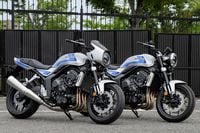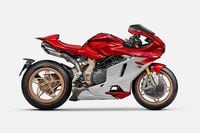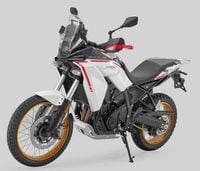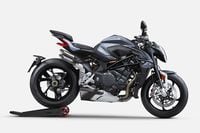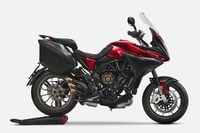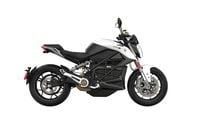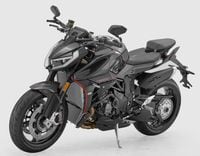Harley needed a new engine so superior to what had gone before that their reputation would be restored. It must be reliable, powerful, and cool-running, capable of further development. It must use very little oil.
In the shovel engine, as the aluminum head warmed up and expanded, it slid imperceptibly across the low-expansion iron cylinder, shearing and deteriorating the head gasket. Strobe studies made on the dyno showed the large inertia of the iron cylinders causing them to “walk” on their base gaskets. For these reasons the cylinders of the new Evolution engine would be aluminum, with iron liners. Now heads, cylinders, and crankcase would all be aluminum, and with alignment dowels to keep all parts from relative motion, gasket conditions and sealing would markedly improve.
Part of the problem of retaining the clamp load on head gaskets was the use of short head bolts on previous models. The shorter the bolt, the less you can stretch it before it yields, so a high-expansion aluminum head, retained by short head bolts, can permanently stretch those bolts by overheating—leading to poor gasket sealing, oil leakage, or gasket failure. Evo's design retained both head and cylinder by long through-studs whose greater ability to stretch elastically allowed the "stack" (cylinder plus head) to expand from heat without permanently stretching the more elastic long through-studs (the stack expands approximately .018 inch from engine cold to engine operating temperature, causing stud tension to rise from 5000-lb./stud cold to 7000 lb./stud hot). Mechanics had to learn to avoid the temptation to pick up a disassembled case half by its studs like they were the handle of a skillet; doing this could bend the Grade 9 studs, compromising their strength.
A major problem of previous Big Twins was piston fit and piston cooling. Because an aluminum piston expands more and faster than an iron cylinder, it must be given adequate clearance. But piston cooling required intimate contact between hot piston and cooler cylinder. This was a problem without a real solution. But in adopting an aluminum cylinder on the Evo engine, it became possible to run at much closer piston clearance – in tests, Harley were able to sustain full throttle operation with clearance as low as .0004 inch. How? First of all, the aluminum cylinder expanded in step with the piston, and when the piston made contact with the wall, the cooling effect of wide-area contact prevented further piston expansion. These were German-made Mahle pistons, containing 12 percent silicon to reduce expansion. Production piston clearance was set at .0014 inch. The top piston ring was a chrome-plated barrel-face type, the second ring a 2-degree taper face, and the oil scraper a three-piece type.
Combustion chambers were made shallower by a further reduction in valve included angle to 58 degrees (27 intake/31 exhaust). This, by reducing the surface area of combustion chamber and piston crown (now flat) also cut the flow of heat into those parts.
In the period between the two world wars a large valve included angle of 90-100 degrees was considered essential because it made room in the combustion chamber for very large valves. This was thought especially important in long-stroke engines whose small bores would otherwise limit valve size. But times change—valuable work by airflow specialists like Jerry Branch, Kenny Augustine, and others had greatly increased the flow that can pass through smaller valves. Because their work also boosted intake velocity, flow had the momentum to continue flowing into the cylinders after bottom center. In this way, smaller valves, set at reduced included angles, became able to supply more air than the larger valves of earlier designs.
This is why the old practice of "hogging out" intake and exhaust ports results in less torque and power. Today's smaller ports are that size for a reason.
Another way to reduce heat flow into piston and head is to speed up combustion, shortening the time exposure of the metal parts to combustion flame. Flame is spread from the sparkplug outward by rapid, turbulent motion of the fuel-air mixture—motion generated originally by high intake velocity. To “refresh” that motion as the piston nears TDC, one side of each combustion chamber was filled-in to be very close to the piston crown at top center. Mixture between piston and head is rapidly squeezed out of this squish area, forming a jet that stirs and accelerates the combustion process.
The other prime source of cylinder head heating is the exhaust port, in which ideal conditions for super-fast heat transfer exist; extremely hot gases, moving at high speed, in a turbulent state. Long ago, heat flow experiments showed that half of the heat picked up by the cylinder head comes from the exhaust port. That being so, Evo's exhaust ports were intentionally made as short as possible.
The relative motion of cylinders was accepted as a given of V-twin operation, so the Evo engine’s intake Y-manifold was made to slip into flexible rubber couplings on the cylinders. Pratt & Whitney had to make flexible intake connections on it 28-cylinder R-4360 radial, after prototypes tore their intake connections to pieces.
To make engine-in-frame maintenance possible, the rocker frame, its spacer, and cap were made as layers thin enough to be slid sideways, out from under the frame rails. To make it also possible to remove the heads, they were fastened to the through studs with bolts equal in length to the head’s thickness. With these bolts removed, the heads could be slid sideways and removed as well.
An important Evo development goal was ability to withstand a 100-hour full-throttle test. Evo engine testing totaled 5600 hours, road testing 750,000 miles. With its new cooling ability, oil-tightness, and mechanical integrity, these machines could routinely be ridden coast-to-coast.
1983 To avoid betting the farm on Evo, the shovel was kept in production for a time. Early Evolution heads were sand-cast in alloy 242 (the same used for the heads of wartime aircraft engines). This material, containing copper, nickel, and magnesium, forms hard intermetallic compounds as it cools and ages, giving it outstanding hot strength.
1984 Sales are 38,741—up 31 percent. Last solid-mounted Shovel engines leave the line June this year. 1340cc Evolution engine in five models is 20 pounds lighter than previous.
1985 Final drives are all tooth belt now. At mid-year, the interim use of sand-cast cylinder heads gave way to die-casting.
1986 New intake and exhaust systems focus on reduced noise (crossover pipe in exhaust, for instance). Connecting-rod big-end roller cages had been aluminum but were now switched to M-section plated steel cages. Cycle magazine dynos a Softail's Evo engine, reading 56 hp at 5000 rpm, peak torque of 69 lb.-ft. at 3000. Bear in mind that to riders, torque is not a number but rather a feeling. A "torquey" engine is one that pulls equally strongly at almost any rpm—it is not peaky. Peak torque is torque measured at its highest point, but to be torquey an engine has to have high torque everywhere.
1987 Harley issues initial public offering of stock. Keihin 38mm carburetor. New cams with 24 percent less intake duration, 28 percent less exhaust duration, and 14 percent less lift. The cooler-running Evo engine was thought able to tolerate more compression and was given 8.5:1 by 1987. Now there is no problem with running same ignition timing on front and rear cylinders (As noted by Vincent designer Phil Irving in his autobiography, the rear cylinder of an air-cooled V-twin runs hotter than the front. To prevent it from detonating it was common to retard the timing of the rear cylinder). As measured by sparkplug washer thermocouple, an Evo engine runs 75 degrees F cooler than a shovel under the same conditions.
Evo oil pressure light could flicker on hot days (indicating oil viscosity loss).
1988 Keihin 38mm butterfly carb continues, as does 8.5:1 compression. Oil capacity is 3 quarts. Dyno output is 55 hp, 69.4 lb.-ft. of torque at 3000 rpm, new 32 amp alternator.
An early VR1000 (Harley’s Superbike racer) design incorporates a gerotor oil pump on the crank, eliminating bearings, a shaft, and drive gears. “Gerotor” stands for “generated rotor,” consisting of two gear-like members—an outer one with inward-facing “teeth” (more like bumps, actually) and an off-center inner rotor that drives it by complementary outward-facing “teeth.” Crank mounting didn’t work on the VR because its high rpm caused pump cavitation. But the concept was remembered later for the P-22 (Twin-Cam) project.
1989 New 1.6-hp starter, new case, for quicker hot-starting. Electronic cruise control introduced. Carburetor is now Keihin CV (constant vacuum type), slips into rubber manifold rather than old two-bolt mounting.
1990 New clutch, 40mm Keihin.
1993 Harley-Davidson production this year is 85,000 units.
1995 Fuel injection becomes an option. Marelli EFI available 1995-2001. Carburetor alternative was Keihin CVK40. A carburetor is a passive fuel system—running rich in warm weather and leaner in cooler weather. EFI continually automatically readjusts fuel mixture in response to rising or falling barometer and temperature—just like a trackside race tuner does, using boxes of jets and needles.
The Harley-Davidson Evolution V-twin delivers the company into a new era of prosperity and reputation for reliable performance.











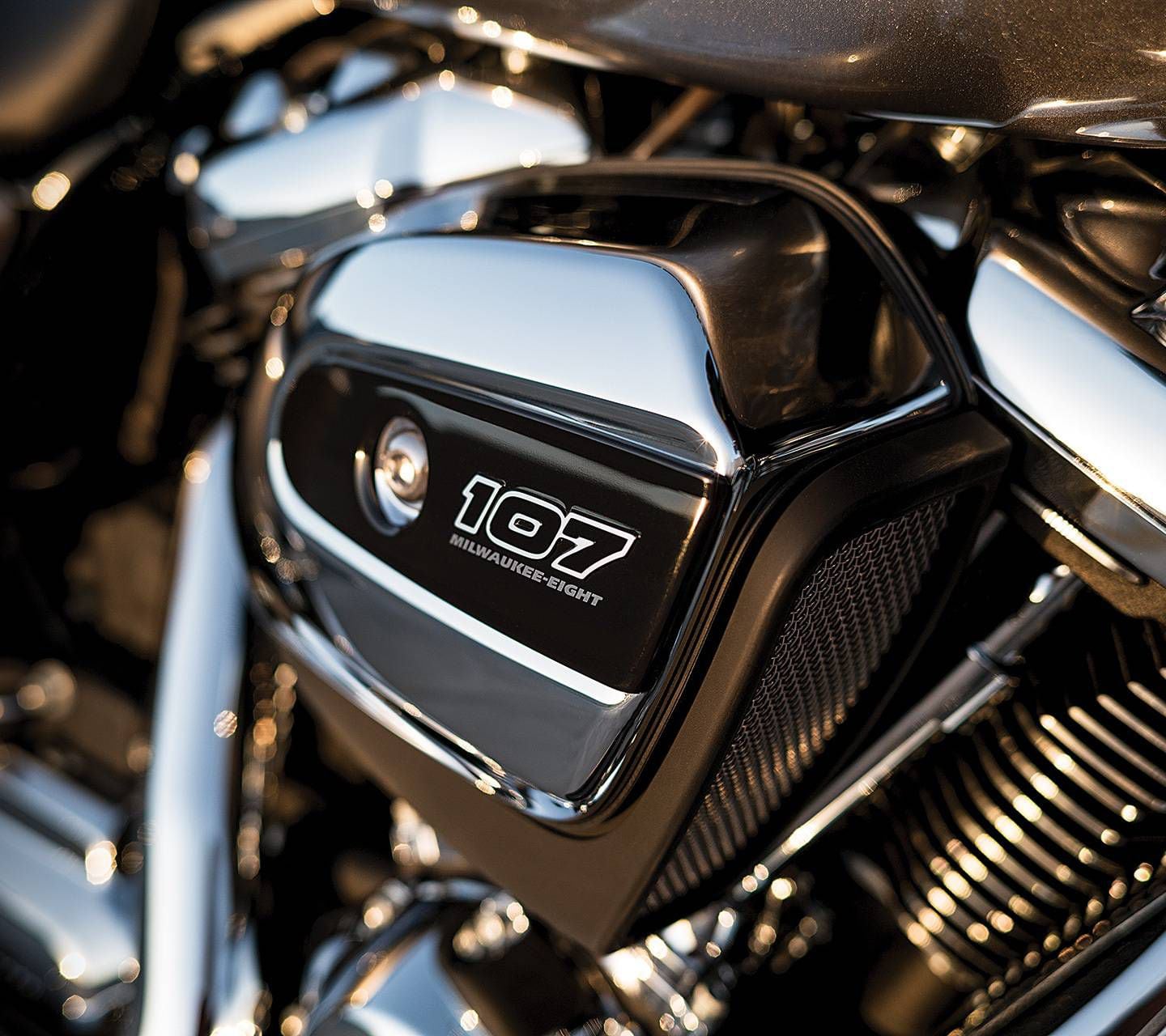
/cloudfront-us-east-1.images.arcpublishing.com/octane/TOUEBBF23JHHLBI5R2QGNKZ3BQ.jpg)
/cloudfront-us-east-1.images.arcpublishing.com/octane/O6OI6THS3BBKFKPTU2GIEN4SQ4.jpg)
/cloudfront-us-east-1.images.arcpublishing.com/octane/GHQWDSJDW5AUXB5HVLAYXQQYKA.jpg)
/cloudfront-us-east-1.images.arcpublishing.com/octane/RZ5QNVGN4ZDRHJIKTPHGDX3HKA.jpg)
/cloudfront-us-east-1.images.arcpublishing.com/octane/ZGBASNGFXVBGXAQGDM6EWLNFXA.jpg)
/cloudfront-us-east-1.images.arcpublishing.com/octane/54BEFUE3XBDCTCAYUYQNZGAJV4.jpg)
/cloudfront-us-east-1.images.arcpublishing.com/octane/5XF2ZKSOR5G7TO23KSYT4JADTU.jpg)
/cloudfront-us-east-1.images.arcpublishing.com/octane/VHUK3FH6WFHLTHN7CKCATU36LM.jpg)
/cloudfront-us-east-1.images.arcpublishing.com/octane/HC4P3CYOXFF3NGXCQTGORFRYNY.jpg)
/cloudfront-us-east-1.images.arcpublishing.com/octane/ZNANUJGGKVBIFH3VRZ32BYC454.jpg)
/cloudfront-us-east-1.images.arcpublishing.com/octane/JACAJ4MPKJBTDBOZRTHXZAKLTA.jpg)
/cloudfront-us-east-1.images.arcpublishing.com/octane/7L3YWQXRBRECXMWQ6NBVAHU2EY.jpg)
/cloudfront-us-east-1.images.arcpublishing.com/octane/BPD5CKH5IFGDLG67Y24UMOXXGA.jpg)
/cloudfront-us-east-1.images.arcpublishing.com/octane/CHQ32B6TVBEPVFNPERY3AB2H3M.jpg)

